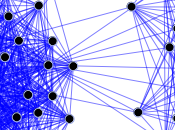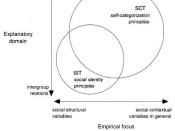According to social construction it is through social interactions that people "act and react in relation to others, through these social interactions we learn what is acceptable and what is not. Over time these rules become internalized within us, and eventually become an unconscious part of our lives and our identity. It is the aim of this essay to explain what is meant by the term 'social construction' and how social construction has furthered our understanding of identity in comparison to other theories such as psychosocial and social identity theory.
Social construction is used to describe how we as humans understand how the world is constructed in and through social relations; there are many different ways of understanding the same issue, rather than there being an objective reality. Our behaviour is regulated by guidelines, which make everyday life predictable and understandable causing us to behave in a certain way the way that is seen as the 'norm'.
Housework provides a good example of a social construction being seen as the 'norm'; in "Western societies many people thought that it was 'natural' for women, rather than men, to do all the housework" (Phoenix, 2002, P69). "It seemed natural because that was what usually happened and had happened for as long as people remembered" (Phoenix, 2002, P69). This is "an example of a construction that was taken for natural because it had been the accepted pattern for a long time" But it wasn't until the feminist viewpoint argued for equality for women with men that it the idea that is not natural for women to do all the housework that another construction developed.
In social construction, language is a powerful tool, used to justify a particular perspective, an example often used is that of "(Potter and Wetherell, 1987) which "illustrates this whether...


